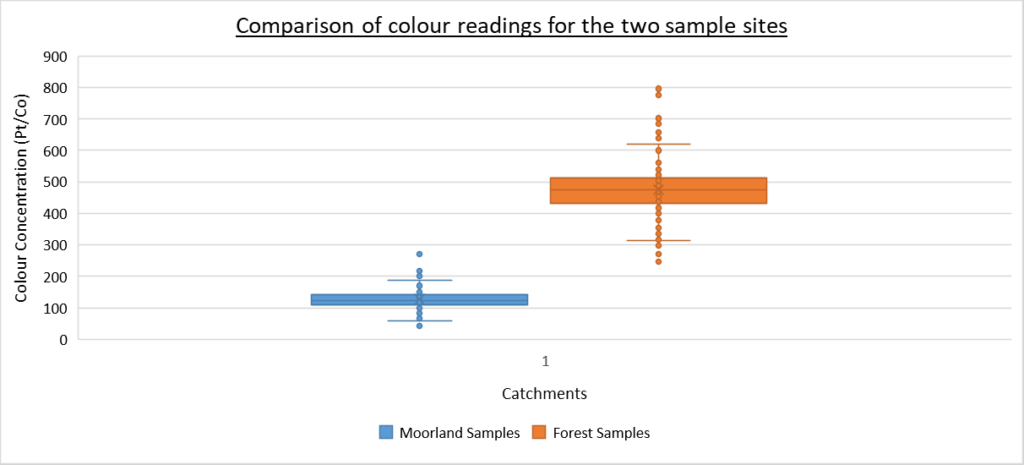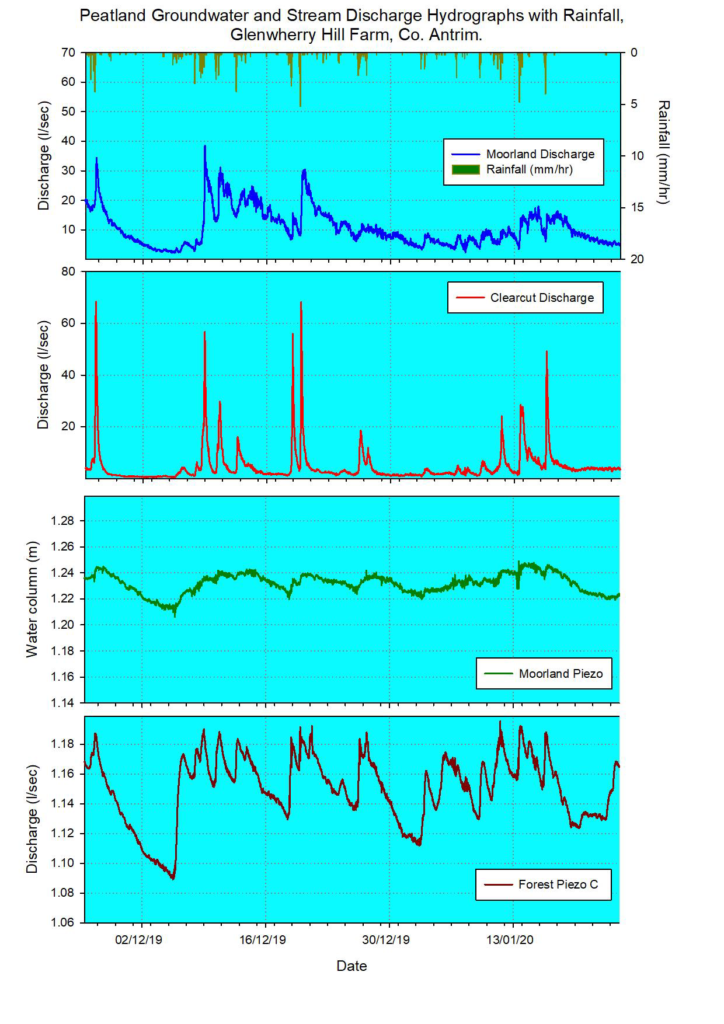Peatlands role in the provision of drinking water
200ha of the CAFRE Hill Farm blanket bog is a sub catchment for Killylane reservoir which serves 60,000 people from Larne to Ballymena. With 70% of drinking water in the British Isles coming from peat catchments it is important to note that there has been a significant decline in water quality over the past 30 years from these catchments.
Dissolved Organic Carbon (DOC) causes the brown colour in the peatland run-off water and this needs removed before chlorination of water.
CAFRE in partnership with Queens University Belfast (QUB) & Northern Ireland Water (NIW) have set up a comparison – monitoring DOC from a relatively intact bog (drains every 60m) versus a heavily modified site (ex-forestry, with minor drains every 3m & main drains every 50m)
QUB engineering students under the supervision of Dr Ray Flynn have collected samples in auto-samplers to analyse for colour and conductivity. Based on 2020/21 analysis and costings, the water from the relatively intact bog was costing over £70/ha/annum less to treat for drinking water provision than that from the heavily drained site.
This work is ongoing as part of the forest to bog project with the aim of returning the heavily drained site to the higher quality ecosystem service provision provided by the relatively intact bog.

Peatlands role in flood alleviation and as a water resource.
The CAFRE Hill Farm has acted as a research platform for engineering students from QUB to investigate flow rate from moorland. The students have compared flow rates from the Creeve Moor as a relatively intact bog with the Creeve Wood which is intensively drained. With the increasing frequency of extreme weather events the flood alleviation services of blanket bog are important as they occupy the 12% of Northern Ireland which attracts the highest rainfall.
The Creeve Wood site was monitored before a restoration project. Even though it had a lower water table and therefore a higher storage capacity for water in the peat, due to the intensity of the drainage system, rainfall left the catchment remarkably quickly versus the moorland of higher water table and lower excess storage capacity. A bog with less drains could be described as a fuller sponge, yet it drains more slowly. It is the 3 dimensional nature of the surface cover vegetation and the lack of drains that slows the run-off from the hills.

With a developing pattern of longer dry spells and more intense rainfall events the ability of blanket bog to hold water and steadily release over days, weeks and months becomes important as an ecosystem service of maintaining a base flow in our upland streams and consequently our lowland rivers.
Projects are ongoing to increase the potential of the CAFRE Hill Farm blanket bog to act as a slow release water resource and flood alleviation system.

